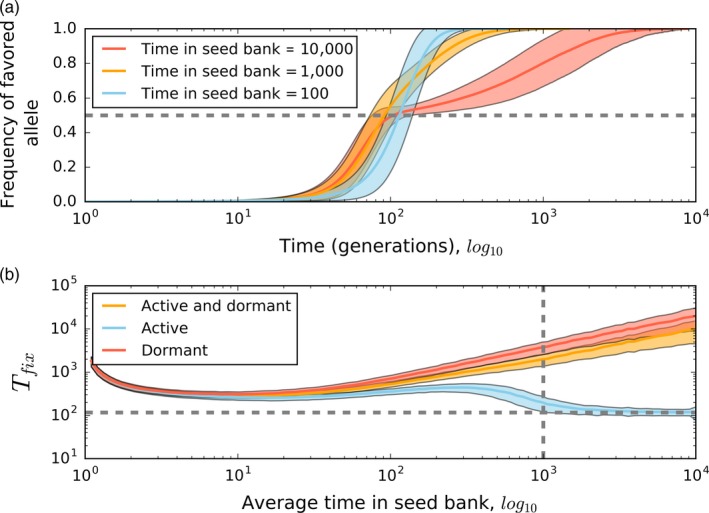Figure 4.

We performed population genetic simulations to determine the extent that dormancy alters the trajectory of a beneficial allele destined to go to fixation and the average length of time until it is fixed (T fix). Simulations were performed on a population containing 1,000 active and 10,000 dormant individuals, where one active individual acquired a beneficial mutation with a 1% fitness advantage. (a) As the average number of generations that an individual spends in a dormant state increases, we see that the trajectory of a beneficial allele destined for fixation changes shape. For example, after reaching an allele frequency of ~0.5 (horizontal gray dashed line), the rate that the beneficial allele increases in frequency drastically slows down when individuals remain dormant for 10,000 generations on average. (b) The length of time until T fix for both active and dormant individuals scales with the average number of generations that an individual spends in a dormant state. However, T fix for the active portion of the population decreases once the average number of generations that an individual spends in a dormant state is higher than the number of active individuals in the population (vertical gray line). After this point, T fix for the active portion of the population quickly approaches T fix for an idealized population where the total population size is equal to the number of active individual (horizontal gray line) (Eriksson, Fernstrom, Mehlig, & Sagitov, 2008, equation 37). These results for (a) and (b) were obtained from a simulated Moran model of a selective sweep with a seed bank (see Supplementary Materials for details)
